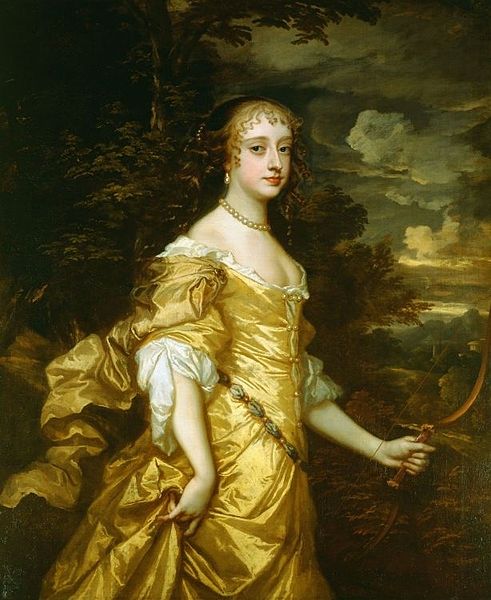

Summer visitors to London still have plenty of time to catch The Wild, the Beautiful and the Damned exhibition at Hampton Court Palace, a breath taking collection of 17th century portraiture assembled in Queen Mary II’s apartments.
Portraits of 17th century pin ups are sumptuously arranged in flounced and swagged ribbons – and with subdued lighting and a Tracey Erminesque tousled bed, this exhibition is all about how to get ahead in the raucous Restoration period.
In the 1660s Anne Hyde, Duchess of York, commissioned Peter Lely to capture in oils the images of ten court lovelies, later known as the Windsor Beauties. Among the sitters were Frances Stuart, the face of Britannia on British coinage; the two Brooke sisters Frances and Margaret about whom it was written “both formed by nature to excite love in others as well as to be susceptible of it themselves” and the indomitable Barbara Villiers, Countess Castlemaine, Charles II’s mistress and mother of five of his illegitimate children.
Barbara, along with her equally bad and bawdy cousin John Wilmot, 2nd Duke of Rochester, are two of the St John family links with this exhibition. The third has rather more of a circuitous connection.
Thirty years after the Lely commission his successor Godfrey Kneller performed the same exercise for Anne’s daughter Mary. The second series of eight portraits were painted specifically to be hung in the Water Gallery at the Palace and became known as the Hampton Court Beauties.
In contrast to the decadent courtesans in dishabille Diana, daughter and sole heiress of Aubrey de Vere 20th Earl of Oxford and his second wife Diana Kirke, has a winsome appeal. One of the Queen’s train bearers at her Coronation in 1689, Diana was also Mary’s maid of honour.
With only an approximate birth date available it appears that the delectable Diana was married off at an early age. She was possibly still a young teenager when she married Charles Beauclerk, 1st Duke of St Albans, the illegitimate son of Charles II and Nell Gwyn. Charles and Diana had twelve children, their fifth son Sidney became a Privy Councillor and Vice Chamberlain of the Royal Household and was the father of Topham Beauclerk. The convoluted St John connection comes via Topham who became the second husband of Lady Diana Spencer following her divorce from Frederick St John, 2nd Viscount Bolingbroke.
Charles Beauclerk died on May 10, 1726 aged 56 and was buried in Westminster Abbey. Former court beauty Diana outlived him by 16 years. She died on January 20, 1742 and is buried in St George’s Chapel, Windsor.
The Wild, the Beautiful and the Damned remains at Hampton Court Palace until September 30. For more details visit the website on www.hrp.org.uk.